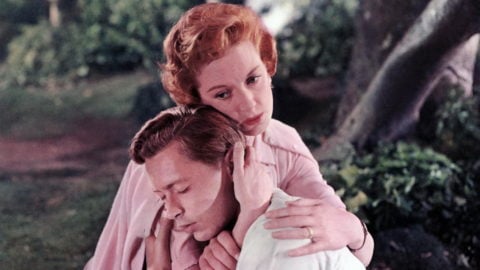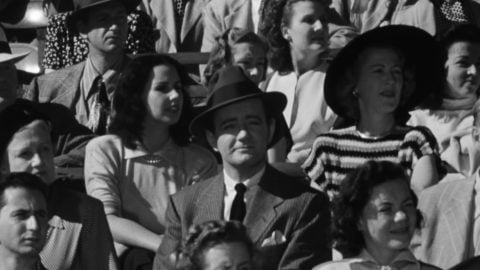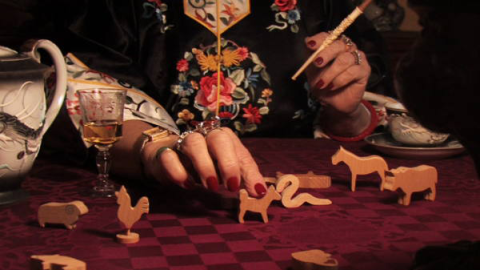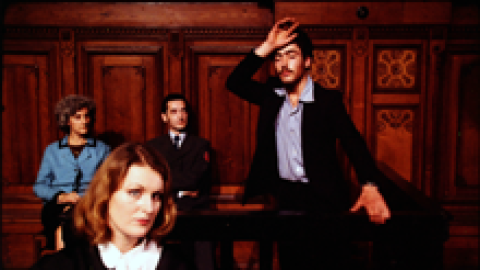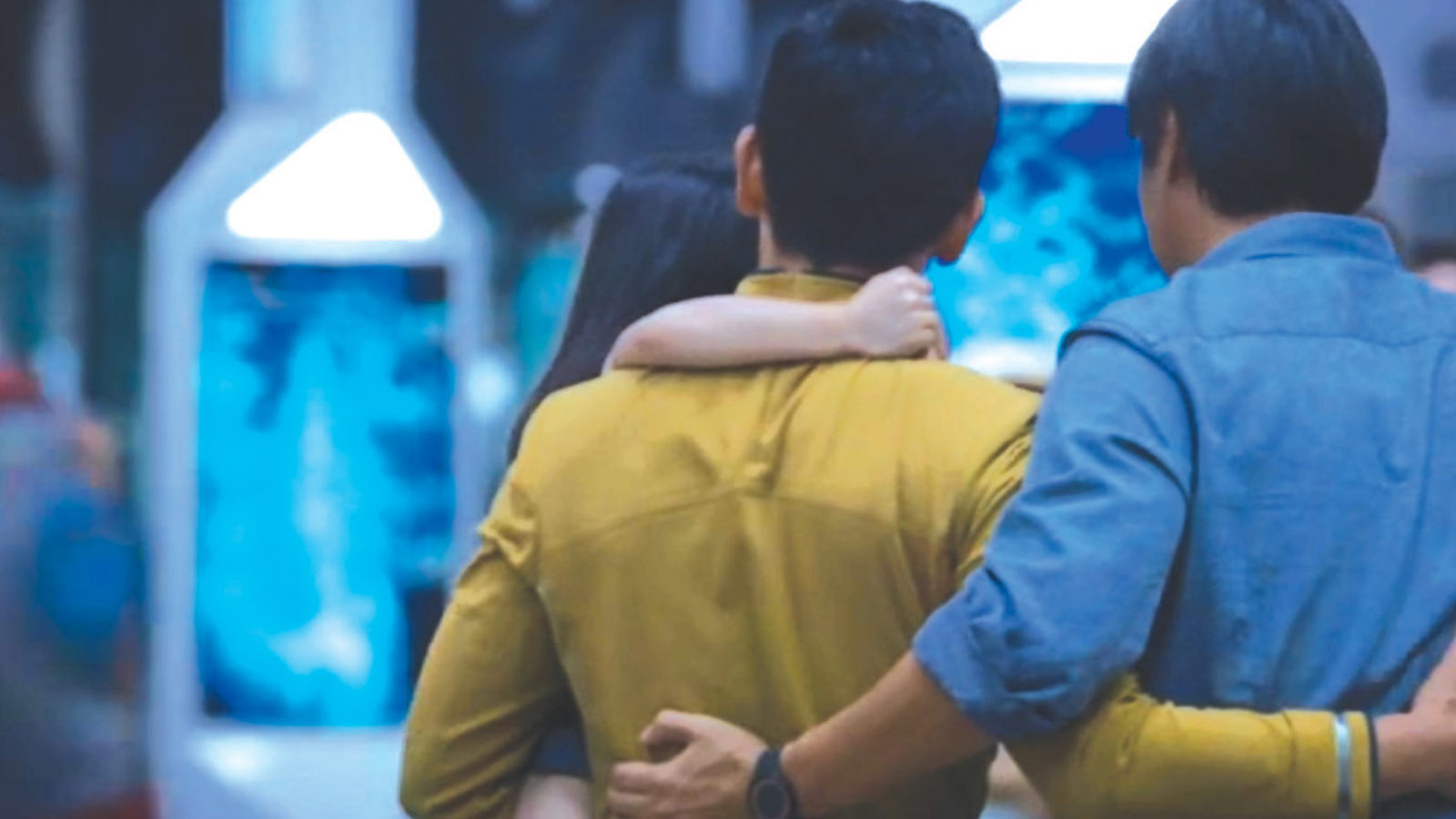
Still Looking
It was the briefest of moments in a summer studio franchise movie—and, had it not been teased, heralded, and chewed on all over the Internet for weeks in advance, it would have been one of the most surprising. In Justin Lin’s Star Trek Beyond, we learn, from a photograph, that Captain Sulu (John Cho) has apparently left a young daughter behind in order to participate in the Enterprise’s five-year mission. When he’s reunited with her, she’s in the care of an attractively daddish man about Sulu’s age. As the three of them walk off together, Sulu puts his arm on the guy’s back and gives it a little rub—just enough to tell us that he’s not his brother. Later in the movie, at the Starfleet equivalent of the office Christmas party, the guy—who isn’t given a name but is listed in the credits as “Ben”—shows up again. He is clearly meant to be Sulu’s romantic partner—an idea confirmed by the film’s creative team.
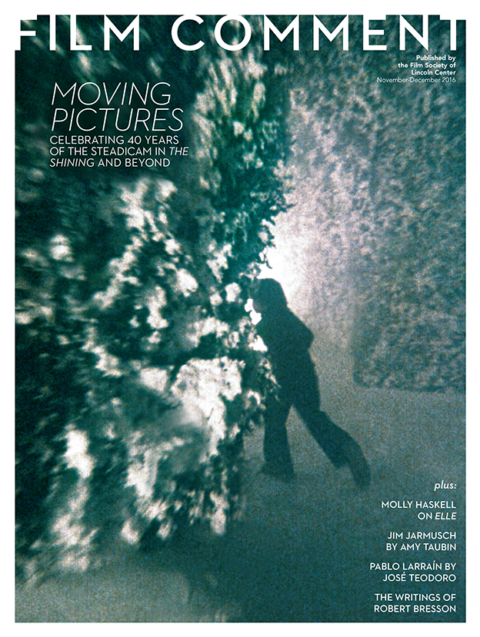
In 2016, that pair of glimpses—let’s be generous and call it 15 seconds of a 122-minute movie—is what passes for gay content in a mainstream Hollywood release. A look, a smile, a touch, no dialogue. I don’t intend to dismiss it entirely; there is political content, impact, and value in retconning an element of a beloved long-running series to say, “Oh, by the way, this guy in this thing you’ve loved for 50 years? He’s gay.” (If you doubt that can have impact, recall the furor in 2007 when J.K. Rowling revealed that Dumbledore preferred the company of other Dumbledores.) The decision displeased original Sulu George Takei, who is gay but doesn’t think Sulu is (it’s complicated). But to me, it was right in line with the whole history of Star Trek’s gestural progressivism. In 2016, a gay Sulu is about as on point, in a Star Trek way, as an Asian Sulu was in 1966—which is to say, newish but hardly groundbreaking.
And yet, for all the laudable motivation behind it, those few Star Trek moments feel more like a nod toward the symbolic importance of LGBT inclusion in mainstream entertainment than the manifestation of an actual desire for it. Few would have expected Star Trek Beyond to build out an entire subplot about Sulu’s home life; after all, over the decades, the series has barely said two words about who he is (quick, what’s his first name?). But the blink-and-miss-it swiftness of the moment—we’re going to give you something a tiny bit gay without even breaking stride—only underscores the shocking absence of LGBT representation in current Hollywood product. The status quo is that of a promise unfulfilled.
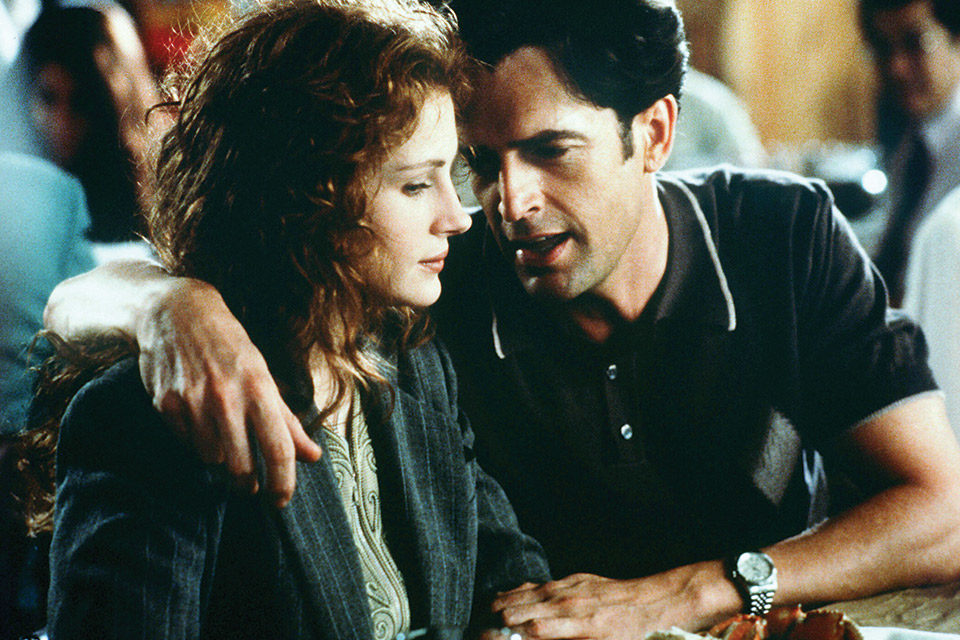
My Best Friend's Wedding
Twenty years ago, emboldened by political and social progress, and galvanized by the early years of the AIDS crisis, Hollywood felt on the precipice of meaningful change. After decades of invisibility, gay characters were finally being granted a small patch of turf; the studios brought forth dramas (Philadelphia), coming-out comedies (In and Out), and gay sidekicks or supporting characters in movies like My Best Friend’s Wedding who weren’t neutered or pathetic, as they had been 10 and 20 years earlier. Yes, they were almost exclusively white, male, and upscale, but today’s arguments about and understanding of representational politics shouldn’t be wielded as a cudgel to beat up movies for failing to live up to standards that weren’t defined and discussed until years after they were made. The assumption was that more diverse and varied characters would emerge eventually, and the optimism felt warranted: LGBT representation seemed to be on the brink of a breakthrough.
Instead, the brink turned out to be the breakthrough. Two decades later, we are not living in the movie-culture utopia that gay Americans hoped those films might presage. Yes, the number of out performers and filmmakers has increased exponentially. Movies from abroad, from Abdellatif Kechiche’s Blue Is the Warmest Color to Alain Guiraudie’s Stranger by the Lake, continue to push (or incinerate) the envelope in terms of explicit depictions of sexuality. And on the American indie front, representation has both broadened and deepened. The smart, determined, conflicted lesbian characters in Todd Haynes’s Carol, the gender-fluid and/or gay kids in Jean-Marc Vallée’s Demolition and Chris Kelly’s moving dramedy Other People, the trans women of Sean Baker’s Tangerine, the cheerfully homewrecking lesbian in Clea DuVall’s The Intervention, the closeted Korean-American boy in Andrew Ahn’s Sundance award-winner Spa Night, and the young African-American protagonist of Barry Jenkins’s much-praised Moonlight are all, in their ways, genuinely new. These are movies that would not have been made in 1996, featuring characters whose existence would barely have been acknowledged then.
But in larger-scale Hollywood movies, where are we? Stalled, according to a Gay and Lesbian Alliance Against Defamation (GLAAD) study released this year; of 114 studio films, only 20 included LGBT characters, and more than three-quarters of them were gay men. Only one studio film (Hot Pursuit, of all things!) was trans-inclusive, and remarkably, Buena Vista and Paramount both managed to exclude LGBT characters from their entire release slates.
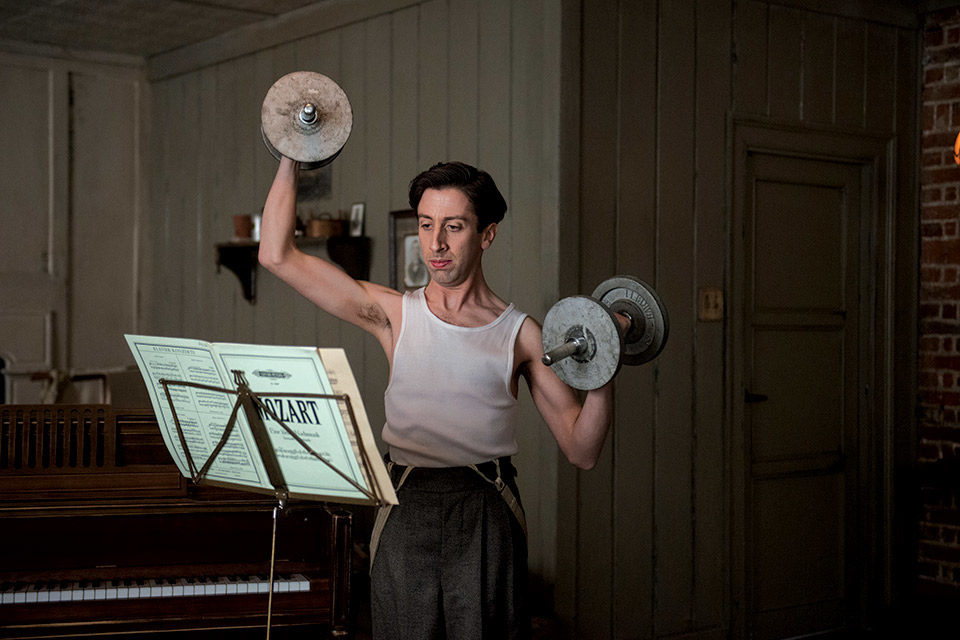
Florence Foster Jenkins
That thinness of representation is not simply statistical; it’s palpable. This year, besides that family-friendly backrub from Sulu, we have had the implicitly gay: Simon Helberg did delightful work as Cosme McMoon (a character so gay he was named Cosme McMoon!) in the independently made, studio-acquired Florence Foster Jenkins, but the script never acknowledged his sexuality beyond a lingering glance he cast at a party. We have had the gay-friendly-but-strictly-no-homo, a worn-out straight-guy trope that comedy trio The Lonely Island updated to the age of the “ally” and attacked with acid glee in Popstar: Never Stop Never Stopping’s Macklemore spoof “Equal Rights”—it’s funny and it’s smart, but it’s about straight people. And, as ever, we’ve had the “well, we’re just not sure.” Many of those who saw Paul Feig’s Ghostbusters reboot assumed that Holtzmann, the character played by out Saturday Night Live star Kate McKinnon, was a lesbian, but when asked, Feig said, “I hate to be coy, but when you’re dealing with the studios and that kind of thing…” He trailed off. And that is where LGBT characters are once again residing: in the ellipses.
One could call these appearances baby steps, but too many of them feel like baby sidesteps. Twenty-two years ago, Richard Curtis’s romantic comedy Four Weddings and a Funeral became a breakthrough hit in the United States while weaving a same-sex couple seamlessly into its portrayal of a group of London friends, and it was hardly an épater les bourgeois revolutionary throwdown. Today, that level of inclusiveness remains just as much of a rarity. There may be less open homophobia in studio movies than there once was; the problem is, there’s not much homo-anything to replace it. In mainstream movies, LGBT characters have journeyed, through the decades, from vilification to sympathy, which gave way to tolerance that became acceptance and even celebration. Then, our flavor-of-the-month sell-by date passed. And what many moviegoers hoped would be the final stage of normalization—our organic inclusion in the fabric of movies—has instead developed into something else. Gay indie cinema still exists, but is more niche than ever now that VOD has made it possible to see most of it without leaving your house. But in mainstream movies, we have moved all the way forward into a polite, accepting, congratulations-on-gay-marriage, yay-we-won period of “post-visibility” that is starting to feel an awful lot like old-fashioned invisibility.
What is keeping gay characters out of studio movies is, I suspect, not fear or ignorance so much as indifference. More than ever, mainstream Hollywood films are brands, designed to be sold as efficiently as possible to an audience that is easily targeted. That can mean, say, men ages 18 to 34, or “people who liked the last six films in this series,” or “guys who will go to pretty much any Liam Neeson movie.” But it rarely means LGBT audiences because, in studio math, there just aren’t enough of us (and also because, well, just look at those letters: we’re four different audiences). That’s a reasonable explanation for why there isn’t, for instance, a gay Fast & Furious franchise (although Fast & Furious itself comes close); it doesn’t explain why we don’t even rate a Sulu-sized appearance in the vast majority of studio product. The answer to that may be bottom-line-driven as well: they don’t include gay people in their movies because they don’t have to; we don’t move the needle on revenue, and we rarely protest our absence.
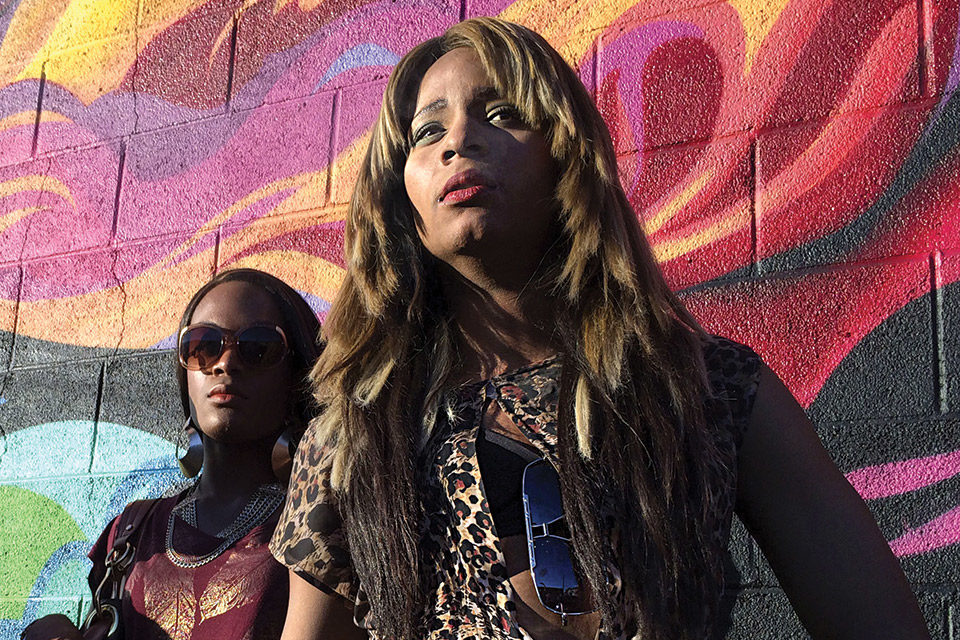
Tangerine
More to the point, we have other places to go. Much has been written in the last decade about how television, which began growing into its neo-golden age in 1999 with The Sopranos and never looked back, has seized cultural primacy from the movies. In LGBT representation, that is inarguable, but also too easily ascribed to speculation about business models and demographics. That argument posits that TV can afford LGBT characters because there’s now an economic universe that allows the medium to succeed by targeting niche audiences, whereas studio movies are still trying to please everyone and offend no one. There’s some truth in that—a critically beloved series like Transparent can survive and even flourish with a relatively wee viewership. But it doesn’t explain how a profusion of LGBT characters, many of them ethnic minorities—something the studios would surely dismiss as too niche—can also exist comfortably on Empire and Orange Is the New Black, two of television’s highest-rated scripted series and, in Empire’s case, about as “mass” as TV gets. Surely something can’t be mainstream enough for your living room but too fringe for the multiplex. Can it?
More than those factors, perhaps it’s the very structural nature of TV series that has allowed the medium to seize the lead on gay visibility from movies. Television thrives on the ongoing; it flourishes by making things normal, familiar, and continuous, over months and even years. Movies have two hours or less.The one thing that most movies can’t do—and that most don’t particularly want to do—is create a sense that you, the viewer, are coming into the world of its characters to witness one episode of many. The strength of narrative films—to suggest a larger world at the edges while giving you only the most important part of someone’s story—makes them, in a way, averse to inclusiveness. In most movies, nobody’s just there; everybody’s there for a reason. And Hollywood still hasn’t figured out a way to incorporate LGBT characters into that picture. If the activist mission statement of a quarter-century ago was “We’re here, we’re queer, get used to it,” then the advantage goes to TV: helping people “get used to it” is the medium’s special skill. In movies, what the message translates to turned out to be, “You’re here, you’re queer, you win, we get it, now can we please move on?”
When directors like Haynes, Gregg Araki, Jennie Livingston, and Isaac Julien began to coalesce into what critic B. Ruby Rich labeled the New Queer Cinema movement in the early 1990s, and the push for inclusion in mainstream movies began, even those of us agitating for it most vocally weren’t entirely sure what our endgame was. Anything would be an improvement upon the nothing—or worse, the agglomeration of offensive tropes and stereotypes—that was being shoveled at us. But understandably, we had trouble looking over the mountain we were still trying to climb. Was the goal a change on screen, a change in the industry, or both? So many of the discussions back then devolved into casting fantasies: we would all know we’d arrived at some kind of finish line when… a straight actor was unafraid to play a gay romantic lead. Or maybe when a gay actor was able to play a straight romantic lead and everyone was fine with it. Or maybe when a gay actor was able to play a gay romantic lead and straight people were interested in seeing it.
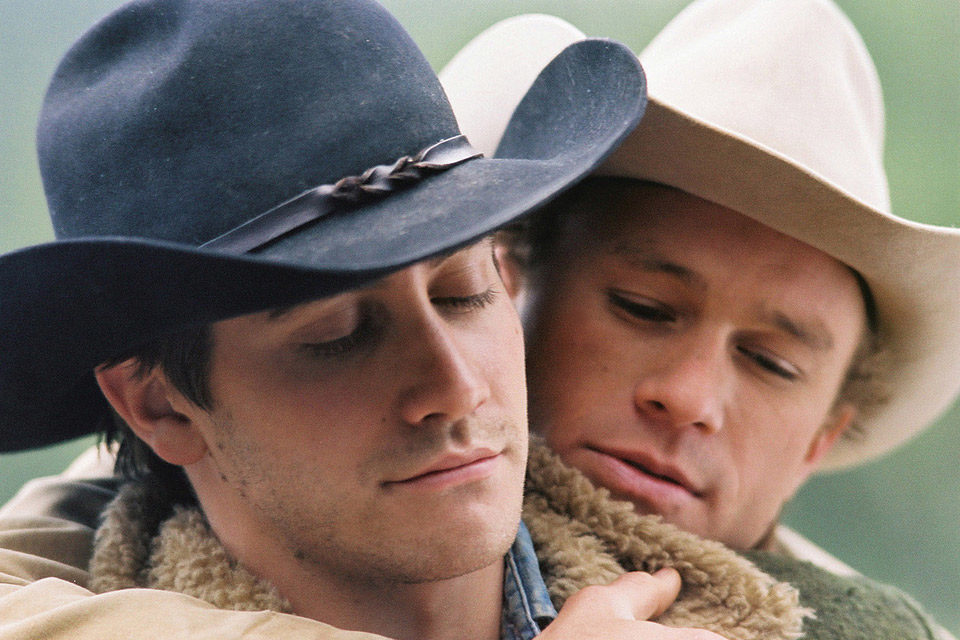
Brokeback Mountain
Usually the ideals we articulated had some strange piece of self-destruction built into the prophecy (“If only someone like Tom Cruise could come out…”). The movies themselves, and what we wanted out of them, got lost in the shuffle. We knew what we didn’t want, but as, let’s say, four percent of the population, did we think we should get custody of four percent of studio movies? Or was it that each studio movie should give about four percent of its time to us? What does it mean for any minority group to be accorded fully equal treatment in movies? It’s hard to say, primarily because it’s never happened; women are a majority group and they’re still fighting for a level playing field and decent representation.
Gay activism was so intertwined with AIDS activism a quarter-century ago that visibility, acceptance, and survival—both inside and outside of pop culture—all started to feel like the same goal. So perhaps it’s appropriate that what we got from Hollywood were narrative templates that reflected those priorities: the coming-out story, the oppression story, and the tragedy. The one time a mainstream movie managed to combine all three was when Brokeback Mountain won three Academy Awards for writing a new chapter in the history of the modern Western and of gay romances; Ang Lee’s 2005 film still stands as a high point, albeit, after more than a decade, an ever lonelier and more distant one.
The rare prestige films that studios greenlight or acquire that touch on gay lives are, it turns out, almost exclusively comfortable with fact-based oppression and tragedy narratives. There are undeniably essential stories of LGBT history to tell, and, at the same time, perfect excuses not to tell the fanciful, funny, thrilling, random, unexpected stories that define the rest of mainstream culture. Some of these movies—most of which are released by high-end indie companies because major studios still can’t be bothered with them—are very fine; give Milk to a director like Gus Van Sant, and he knows what to do with it. But their collective intent can sometimes feel like “I gave at the office.” Dallas Buyers Club won two Oscars by creating a straight savior (who actually wasn’t one) for an embattled gay community (which, historically speaking, was not standing around haplessly waiting to be saved). And The Imitation Game wrapped the homosexuality of its main character in a kind of period martyrdom that allowed its audience to keep any thoughts of discomforting contemporary bigotry at a safely insulated distance.
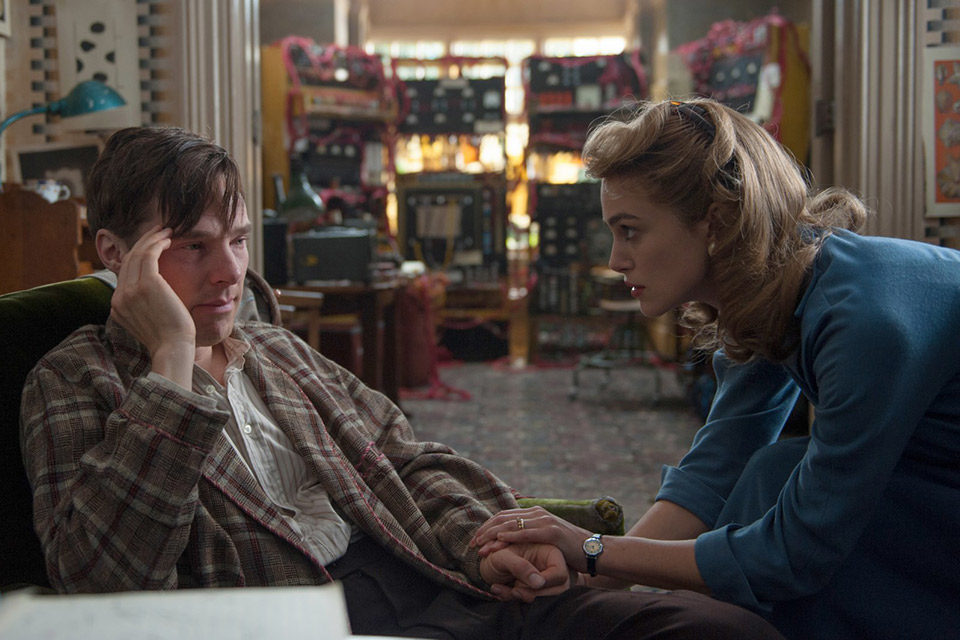
The Imitation Game
It seems churlish to note that in these films, good intentions pave the road to just about all of the gay characters being dead by the time the credits roll. But it is maddening that the body count first discussed 35 years ago in Vito Russo’s pathbreaking history The Celluloid Closet continues to rise; the studios are still most comfortable with gay characters as objects of victimization. It would be easier to get a sad gay biopic greenlit in the Hollywood of 2016 than to persuade a studio to take a thriller or a comedy or a crime drama or an action movie and flip the sexual orientation of just one character.
Representation is, of course, an across-the-board struggle, and the fight for inclusiveness usually comes down to two demands: tell our stories (or better still, let us tell our stories), and put us in “your” stories. However, comparisons between the push for LGBT representation and the struggle for more black, Latino, Asian, and female roles and narratives can take us only so far. “Put us in your stories” can, for many minority groups, be a simple matter of race-blind casting, but creating gay characters is unique in that it always requires at least some writing as well. In other words, Sulu is evidently Asian in every frame of Star Trek Beyond in which he appears; he’s only gay if a writer figures out a way to make it known.
So, back to that backrub. In some ways, it does feel like the starship Enterprise is not very boldly going where much of movie culture went 20 years ago and no further. The moment is easy to deride: why not a kiss for the husband he hasn’t seen in quite some time? Why not a couple of lines for “Ben”? Why not shoot the scene that was apparently written in which Sulu expresses concern about putting his husband and child in jeopardy? Having seen the movie, I don’t think it would have been a backbreaking challenge to find room for it.
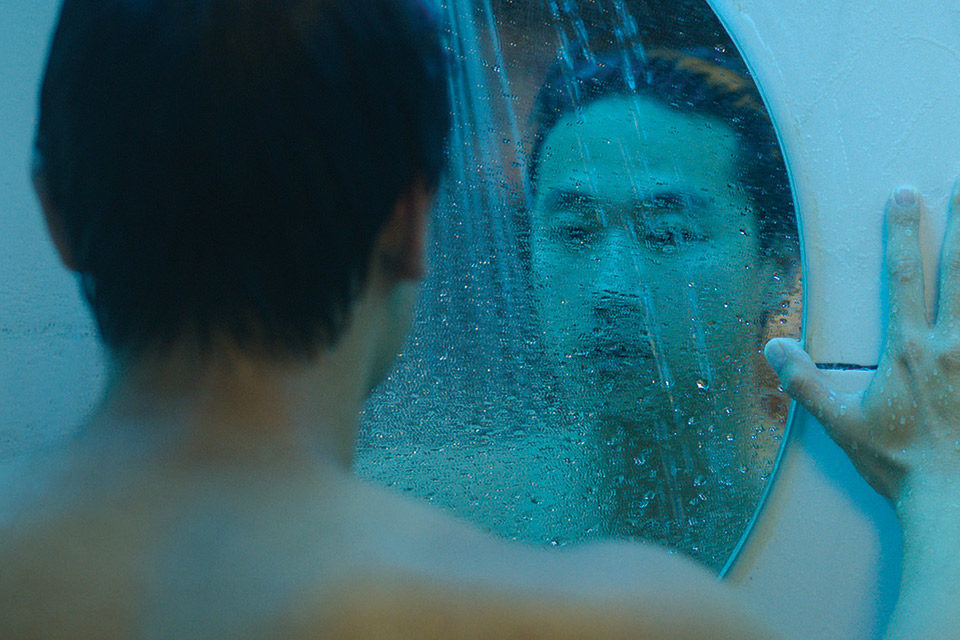
Spa Night
But in a glass-half-full way, we might also choose to celebrate the Sulu gesture for its elegant economy. What it says to other Hollywood studios—and, in particular, to the makers of the franchise films that now keep those studios functioning—is that “Put us in your stories” is not asking much. We’re there already; a film doesn’t have to stop a story in its tracks to acknowledge that, or hand itself a humanitarian award for figuring it out. It would be unfair to say Star Trek Beyond did the very least a movie can do, since most Hollywood movies do so much less. Better to count it as one small step for man, and encourage other movies, if they’re not willing to sprint past it, to at least try and keep up.
Mark Harris is the author of Pictures at a Revolution: Five Movies and the Birth of the New Hollywood (2008) and Five Came Back (2014).



